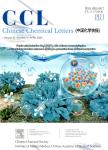Genetic algorithm aided density functional theory simulations unravel the kinetic nature of Au(100) in catalytic CO oxidation
Genetic algorithm aided density functional theory simulations unravel the kinetic nature of Au(100) in catalytic CO oxidation作者机构:Key Laboratory for Advanced Materials Centre for Computational Chemistry and Research Instiute of Industrial CatalysisSchool of Chemistry Molecular EngineeringEast China University of Science and Technology
出 版 物:《Chinese Chemical Letters》 (中国化学快报(英文版))
年 卷 期:2019年第30卷第6期
页 面:1346-1350页
核心收录:
基 金:supported by National Key R&D Program of China(No. 2018YFA0208602) National Natural Science Foundation of China(Nos. 21421004, 21825301, 21573067, 91545103) Program of Shanghai Academic Research Leader (No. 17XD1401400)
主 题:Gold catalysts Genetic algorithm Density functional theory Potential energy surface Surface reconstruction
摘 要:Heterogeneous catalysis is of tremendous importance to modern industries. Exposed atoms of heterogeneous catalysts are heavily involved in surface processes such as the adsorption, activation, diffusion and reaction of substrate molecules. Surfaces of metal or metal oxide based catalysts are usually taken as hard templates that only undergo limited relaxation during catalytic reactions, especially in theoretical simulations. In this work, by using genetic algorithm (GA) aided density functional theory (DFT) calculations, we studied the surface processes involved in CO oxidation on the Au(100) surface. The use of GA greatly improves the capacity of DFT calculations in locating the potential energy surface (PES) of the surface reactions, and surprisingly, it has been found that the Au(100) surface can undergo drastic reconstruction under the influence of O adsorption and the adapted partially oxidized Au surface exhibits unique activities for subsequent adsorptions and reactions. This work depicts the kinetic nature of the Au (100) surface in its catalyzed reactions and also significantly expands our understanding of how surface atoms act in heterogeneous catalysis.



